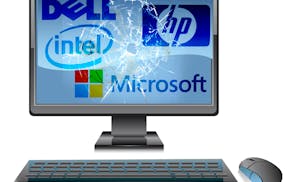Q Supercookies have been in the news lately. How can I tell if I have them in my computer? And if so, how do I get rid of them?
LARRY BEDARD, MINNEAPOLIS
A Cookies that track your online activities are an annoyance, and supercookies are worse because they're hard to eliminate.
Normal cookies are bits of code that are almost invisibly downloaded to your Web browser by websites. They may contain passwords or personal preferences for your favorite websites, which is fine. But they may also track your movements online for the benefit of online advertisers who can then aim specific ads at you.
But, welcome or not, these normal cookies can be deleted by your browser's privacy controls.
Supercookies, which are more likely to track you than remember your password, are hidden outside the browser where they can't be easily deleted.
While automated software is available to get rid of one type of supercookie, called a Flash cookie, there's no easy way to delete some other types.
Flash cookies are stored with the Adobe Flash animation software used by Web browsers. Flash itself is a good thing; without it, most Internet video and a lot of website animations wouldn't work. Flash cookies, which aren't associated with Adobe, simply hide amid the Adobe computer code.
Two free programs introduced earlier this year can find and erase Flash cookies. They are FlashCookiesView (tinyurl.com/43c8ljk) and Flash Cookie Cleaner (tinyurl.com/3fngf5a.)
Dealing with some other variants of the supercookie are still beyond the ability of most computer users. One of these, called the Evercookie, uses the Javascript computer language to identify a computer to a website, even after regular cookies and supercookies have been erased from a PC.
A different type of Evercookie, called a Zombie cookie, relies on computer code stored elsewhere on your computer to re-create itself after it has been deleted. To read more, see tinyurl.com/3fg8b2x.
Two weeks ago, I suggested that the fix for a jumping cursor problem in Windows XP was to change the mouse sensitivity settings.
But Paul Anderson of Ottawa suggests that for a PC of that vintage, a dirty mechanical mouse might be causing the problem.
Here's how to clean a mechanical mouse: With your PC off, unscrew the plastic ring around the rotating ball on the bottom of the mouse. Remove the ball, wash it with mild soapy water and dry it. Use a damp cotton swab to clean off the ball's contact points inside the mouse. Blow into the mouse to remove any dust. Replace the ball and screw on the plastic ring.
E-mail tech questions to steve.j.alexander @gmail.com, or write to Tech Q&A, 425 Portland Av., Minneapolis, MN 55488. Include name, city and telephone number.

Alexander: A beeping computer is telling you what's gone wrong inside

Alexander: How to stop deleted iPhone e-mails from coming back

Alexander: Refurbished PCs may need a BIOS update to use new components

Alexander: Windows 11 not always to blame for browser or e-mail problems


